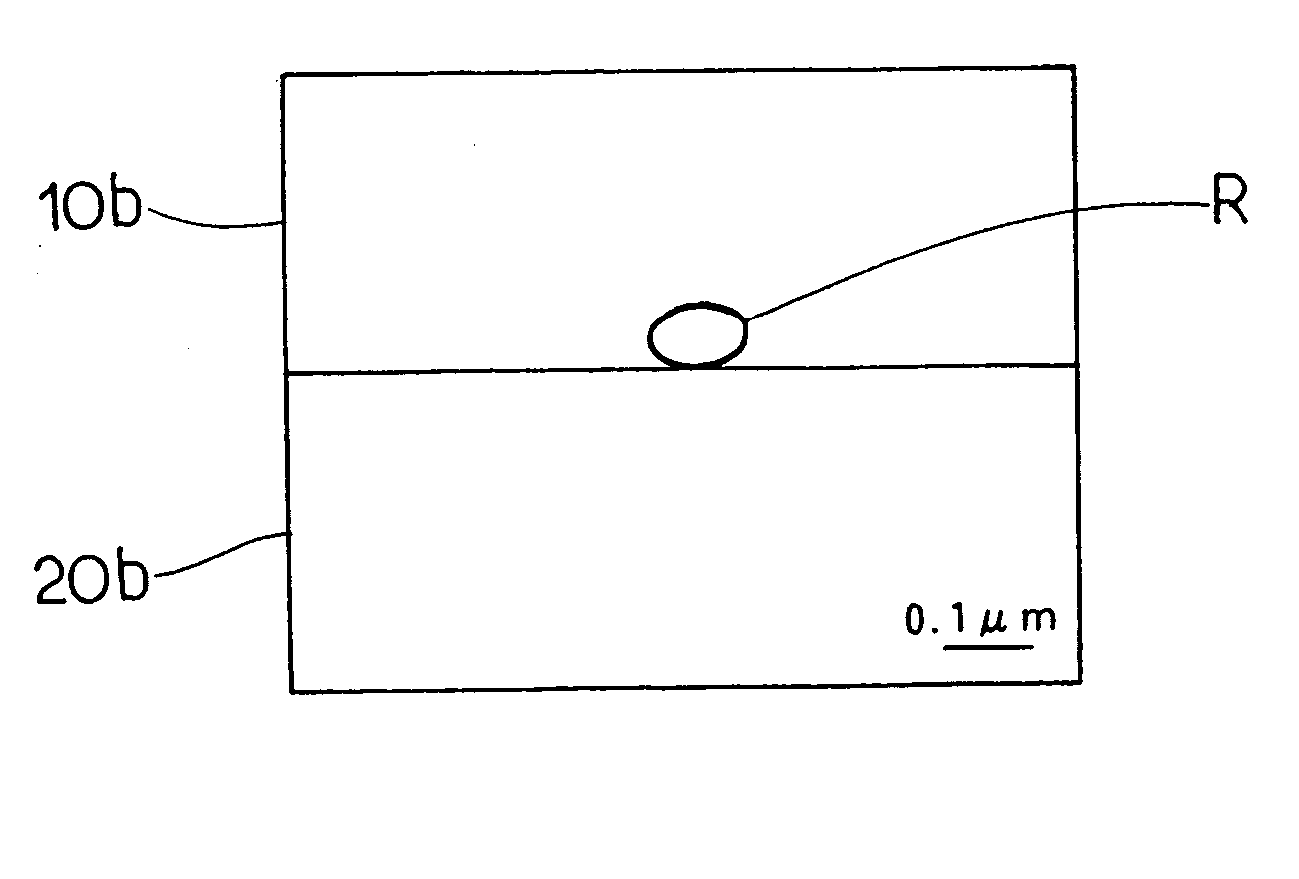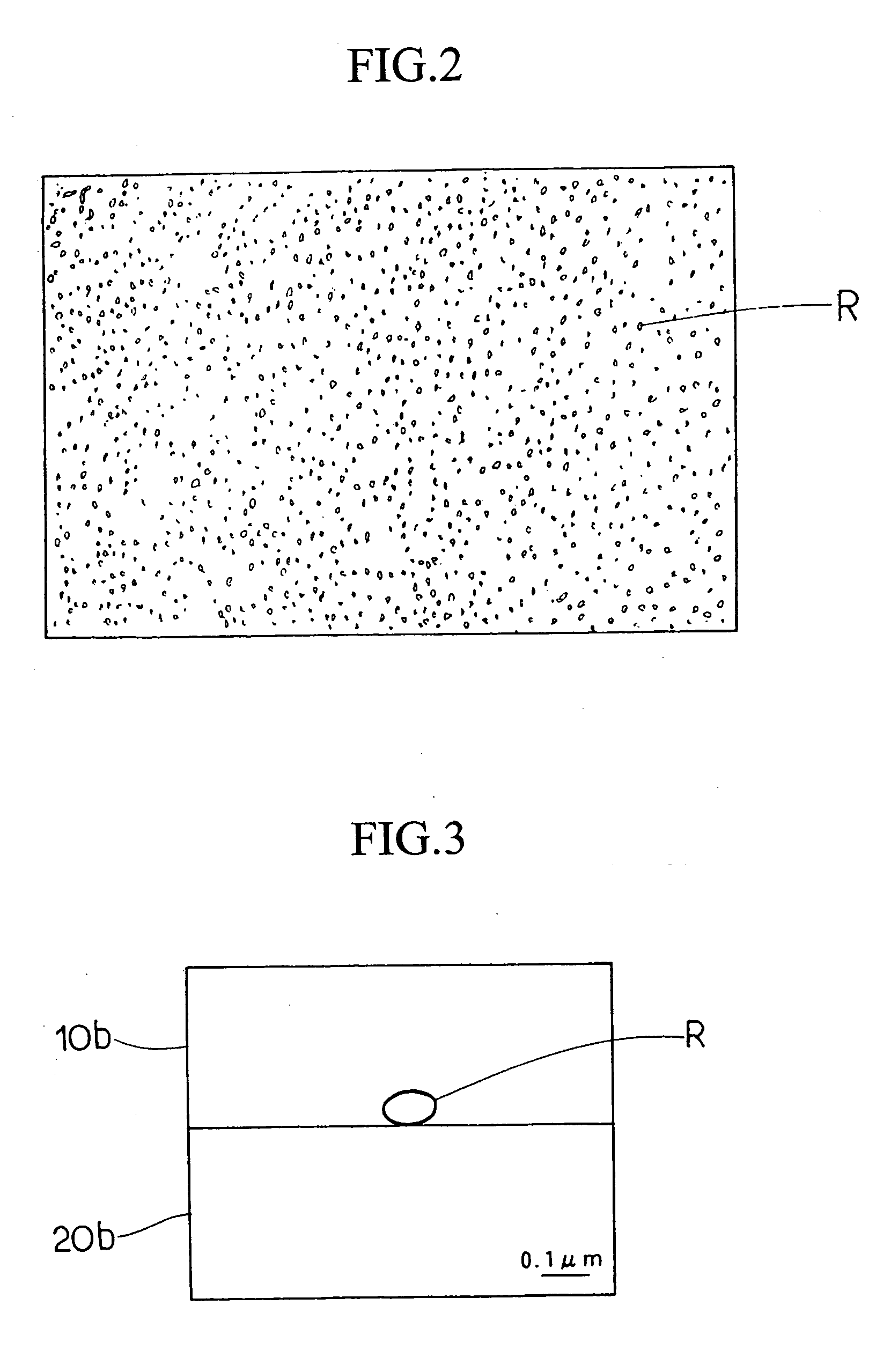Bonded SOI substrate, and method for manufacturing the same
- Summary
- Abstract
- Description
- Claims
- Application Information
AI Technical Summary
Benefits of technology
Problems solved by technology
Method used
Image
Examples
example 1
[0098] As shown in FIG. 1, a single crystal silicon ingot doped with a predetermined amount of arsenic or antimony is pulled up by the CZ method (alternatively, the FZ method may be applied). And then, the obtained single crystal silicon ingot is subjected to block cutting, a notching process, slicing, chamfering, mirror polishing of a surface, and the like. Thereby, a mirror-polished n-type wafer for an active layer 10 of 8 inches in diameter is prepared (see FIG. 1(a)). In contrast, a similar mirror-polished wafer for a support substrate 20 is prepared by the same manufacturing process as for the wafer for an active layer 10 (see FIG. 1(b)). Next, the wafer for the support substrate 20 is put into a thermal oxidization furnace, and is subjected to a thermal oxidization process in an atmosphere of water vapor at a temperature of 1050° C. for four hours. Thereby, a silicon oxide film (an insulating film) 20a having a thickness of 1.0 μm is formed.
[0099] Next, from a surface of the ...
example 2
[0113] Next, referring to FIG. 4, a bonded SOI substrate and a method for manufacturing the same of Example 2 of the present invention will be explained below.
[0114] As shown in FIG. 4, a non-doped single crystal silicon ingot is pulled up by the CZ method. And then, the obtained single crystal silicon ingot is subjected to block cutting, a notching process, slicing, chamfering, mirror polishing of a surface, and the like. Thereby, a mirror-polished non-doped wafer for an active layer 10 of 8 inches in diameter is prepared (see FIG. 4(a)). In contarst, a similar mirror-polished wafer 20 for a support substrate is prepared by the same manufacturing process as for the wafer for an active layer 10 (see FIG. 4(b)).
[0115] Next, from a surface of the wafer for an active layer 10, arsenic or antimony is implanted at, for example, an implantation energy of 60 keV and a dose amount of 1×1015 atoms / cm2. Thereby, an ion implantation layer I is formed at a predetermined depth in a surface lay...
PUM
 Login to View More
Login to View More Abstract
Description
Claims
Application Information
 Login to View More
Login to View More - R&D
- Intellectual Property
- Life Sciences
- Materials
- Tech Scout
- Unparalleled Data Quality
- Higher Quality Content
- 60% Fewer Hallucinations
Browse by: Latest US Patents, China's latest patents, Technical Efficacy Thesaurus, Application Domain, Technology Topic, Popular Technical Reports.
© 2025 PatSnap. All rights reserved.Legal|Privacy policy|Modern Slavery Act Transparency Statement|Sitemap|About US| Contact US: help@patsnap.com



